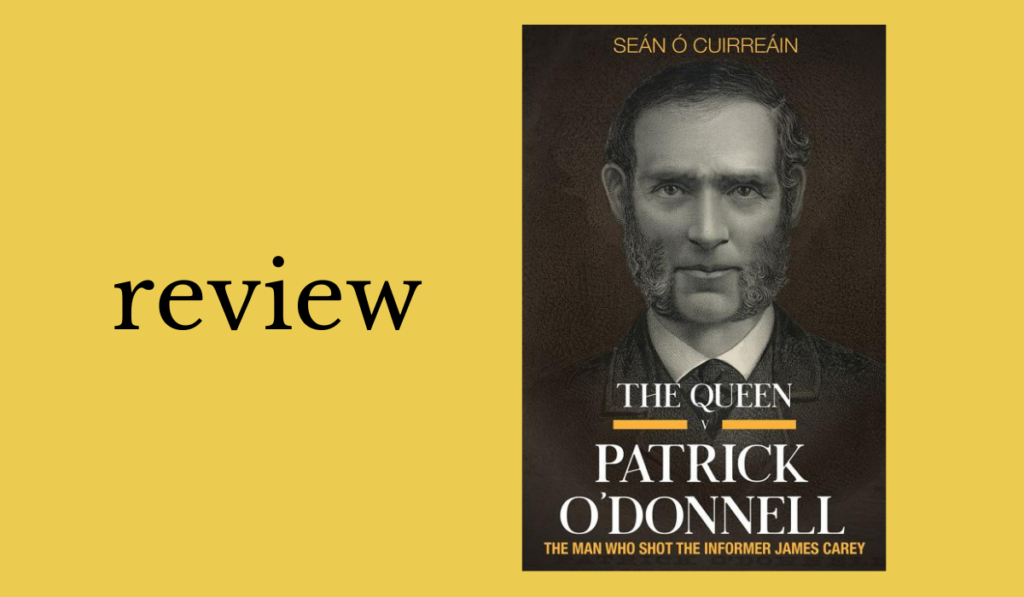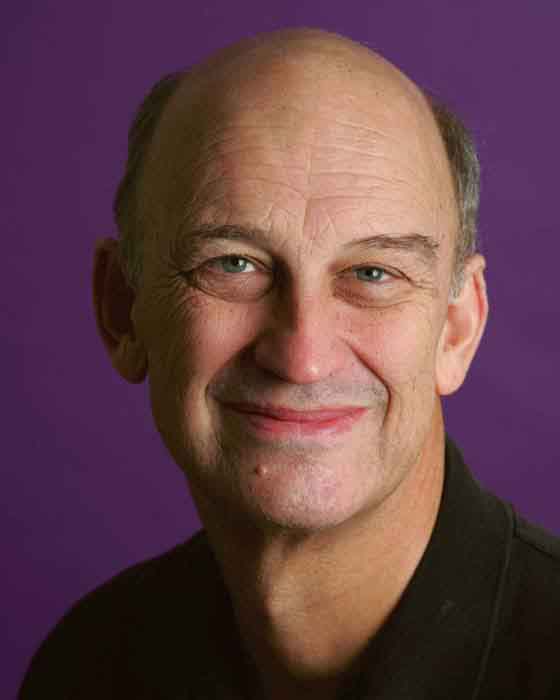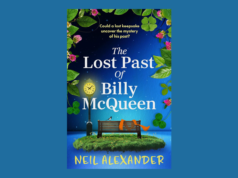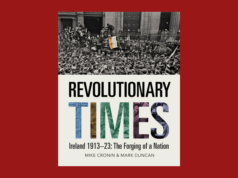
The Queen v Patrick O’Donnell: The Man Who Shot The Informer James Carey|Seán Ó Cuirreáin|Four Courts Press| ISBN: 978-1-84682-994-9
John Kirkaldy on the fascinating account of the shooting of Invincible informer James Carey by Patrick O’Donnell, and the subsequent trial.
On the afternoon of Saturday, 29th July 1883, two Irishmen, James Power and Patrick O’Donnell were having a drink aboard the ship Kinfauns Castle. The boat was sailing from Cape Town to Durban on the South African coast. Three shots rang out and Power was dead.
It was the start of a murder trial that made the front page world-wide and witnessed the views of Queen Victoria, American President, Chester A. Arthur, Prime Minister, William Gladstone, Home Secretary, Sir William Harcourt, and politicians and commentators of all persuasions. Top lawyers from Britain, Ireland and America were also heavily involved. There was even a plea for clemency from French novelist, Victor Hugo.
Not quite what it seemed
One of the many strengths of this book is that it is meticulously researched, using wherever possible primary sources, including British Home Office files that have been kept secret for 100 years. The book emerged from a drama documentary commissioned by TG4 and, in best whodunit tradition, a lot turned out to be not quite what it seemed.
Mr Power was, in fact, James Carey, who was fleeing after being the chief informer in the trial of the Invincibles.
This group of nationalists had assassinated the Irish Chief Secretary, Lord Frederick Cavendish, and Thomas Henry Burke, Permanent Under Secretary, the leading British civil servant in Ireland, as they walked in Dublin’s Phoenix Park on 6th May 1882.
The Invincibles
Carey was a leading figure in the Invincibles but was persuaded, along with a few others, to inform.
As a result, five Invincibles were hung and ten others received long prison sentences.
The fact that Carey had helped recruit and plan the killings made him a national villain. ‘To turn queen’s evidence against Fenian brothers and see them hang in order to save his own neck was a disgrace and ignominy beyond forgiveness.’ He was hoping along with his family to start a sheep farm in South Africa.
Myth from reality
It is one of the many virtues of the book that it separates myth from reality. O’Donnell was not a member of the Invincibles, planted on the boat to seek revenge, as many accounts and legends claim.
In fact, for the first three weeks of the voyage, the two men and their families got on well, and regularly socialised, Carey even persuading O’Donnell that there were more opportunities in Durban, than his original intention of settling in Cape Town.
It was in Cape Town that O’Donnell became aware of Carey’s real identity through seeing copies of the Cape Argus.
Newspapers of that time were not able to reproduce copies of photographs but could carry very real-life portraits and illustrations. Their relationship underwent a very dramatic change, when O’Donnell confronted Carey with his real identity.

Patrick O’Donnell
O’Donnell’s life was not an untypical one of the period. He was born in August 1838 in a poor background in Meenaclady in the parish of Gweedore, Co. Donegal. He could speak both Irish and English but was literate in neither of them.
Like so many others, he was taken with his family to America to try to escape the poverty of the Famine.
For much of his life, he went backwards and forwards between the two countries, doing menial jobs. A complication turned out when it was found that his accompanying much younger ‘wife’ on the boat was not his wife but Susan Gallagher. He already had a wife, Maggie, who was living in America!
Global sensation
Thanks to the telegraph, O’Donnell became a global sensation overnight. Celebratory bonfires were lit all over Ireland. A provincial newspaper spoke for many, ‘murderer, traitor, coward and braggart – all and everything detestable entered into the character of James Carey.’
Irish America was equally vehement and funds were soon being raised for O’Donnell’s defence.
Queen Victoria in her journal noted, ‘That shooting of Carey, though he richly deserved it, is not a good thing, as it shows the power of secret societies to be still very great.’ Much of the British press was concerned on the impact of the killing in Ireland at the height of the agitation of the Land League, led by Michael Davitt.
High powered legal teams
The general interest and the large sums of money raised meant that all sides would be represented by high powered legal teams. The author takes the reader through the various stages of the legal process but the issues remained the same. (The Crown won an important early victory in getting the trial to take place in the Old Bailey in London, rather in South Africa; it was felt that the colonies might be more lenient.)
O’Donnell’s defence did not change from the start. He told the Magistrate in Cape Town, ‘I am not guilty my lord of wilful murder. It was done by me in self-defence. Mr Carey pulled a revolver out of his right hand pocket. I snatched the revolver out of his hand.’
Undue Influence
The book makes a convincing case that the judge, Justice Denman, unduly influenced the jury in its verdict. Its members sent in two written notes, asking for the difference between murder and manslaughter (the last being very likely to escape the death penalty). They were anxious to have an explanation of ‘malice aforethought’.
The judge made much of the fact that O’Donnell had fired three shots.
After two hours deliberation, they returned with a guilty verdict and Justice Denman donned the traditional black hat in pronouncing the death sentence. As he left the dock, O’Donnell, who had been restrained throughout the trial, cried out, ‘Three cheers for Ireland. Good bye, United States. To Hell with the British Government and the perjurers who found me guilty.’
Folk memory
O’Donnell has passed into folk memory. Ballads, poems and books were written about him. There are four memorials to him in Ireland. Petitions for commuting the sentence were refused (including the American President; it was debated whether O’Donnell was an American citizen).
O’Donnell seems to have been a very ordinary man, placed in a very extraordinary situation. Perhaps the Scottish verdict of Not Proven would be a fairer verdict?

John Kirkaldy has a PhD in Irish History, worked for many years with the Open University and has been reviewing for Books Ireland since 1980. He has contributed to three Irish history anthologies, a school textbook, and has been involved in a number of Open University History documentary series. Aged 70, two years ago, he went round the world on a much delayed gap year described in his book, I’ve Got a Metal Knee: a 70-Year Old’s Gap Year.











